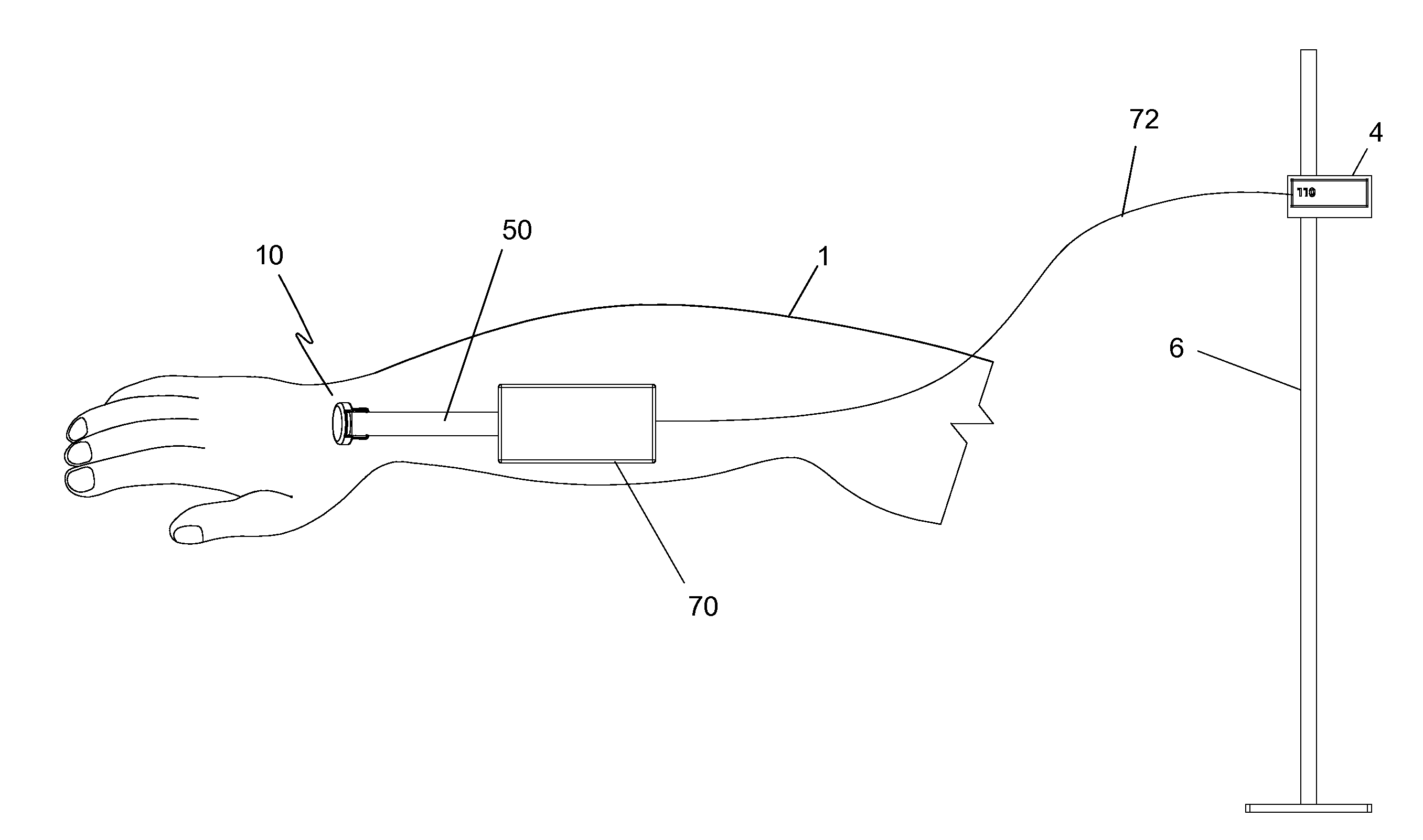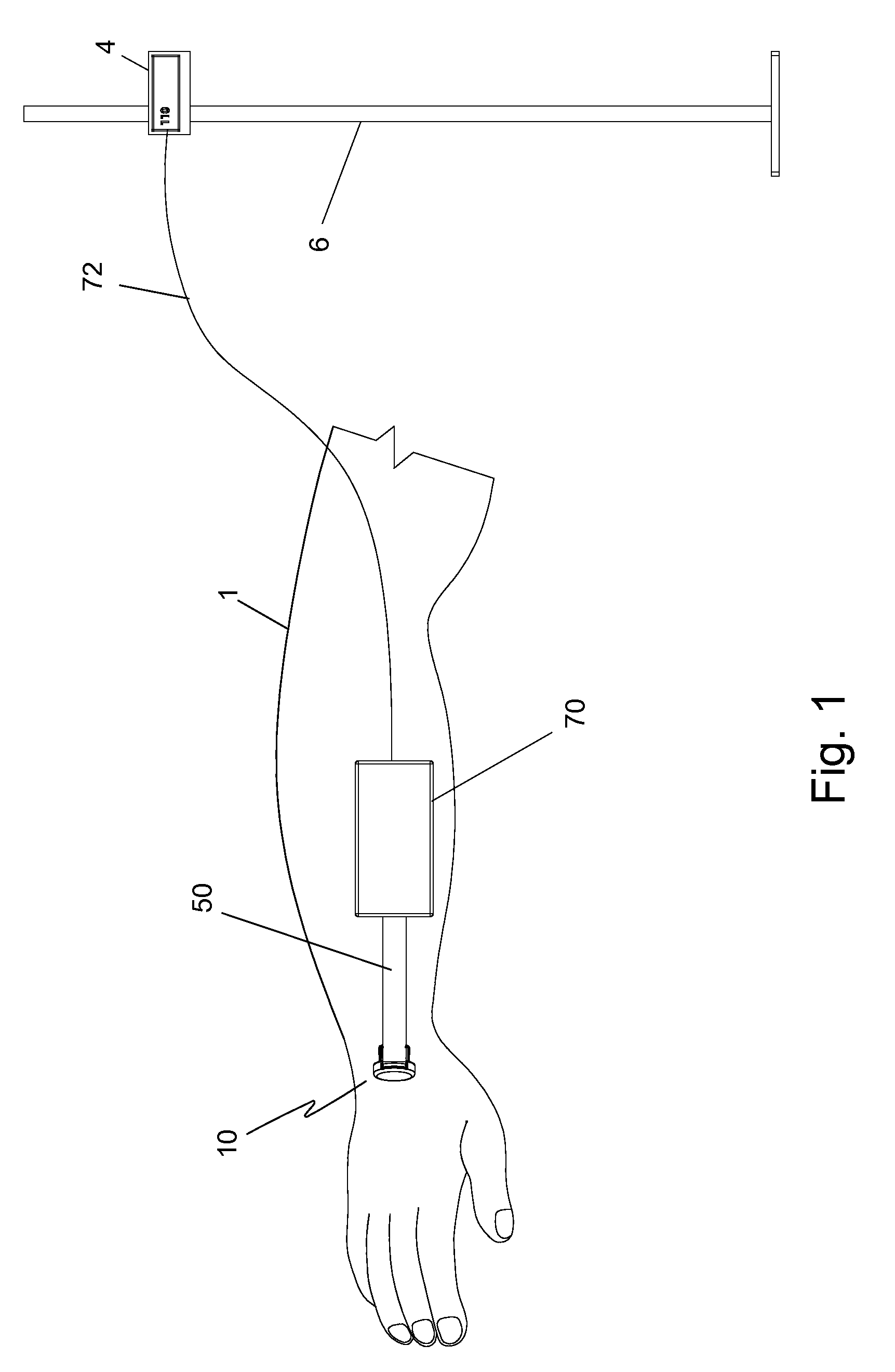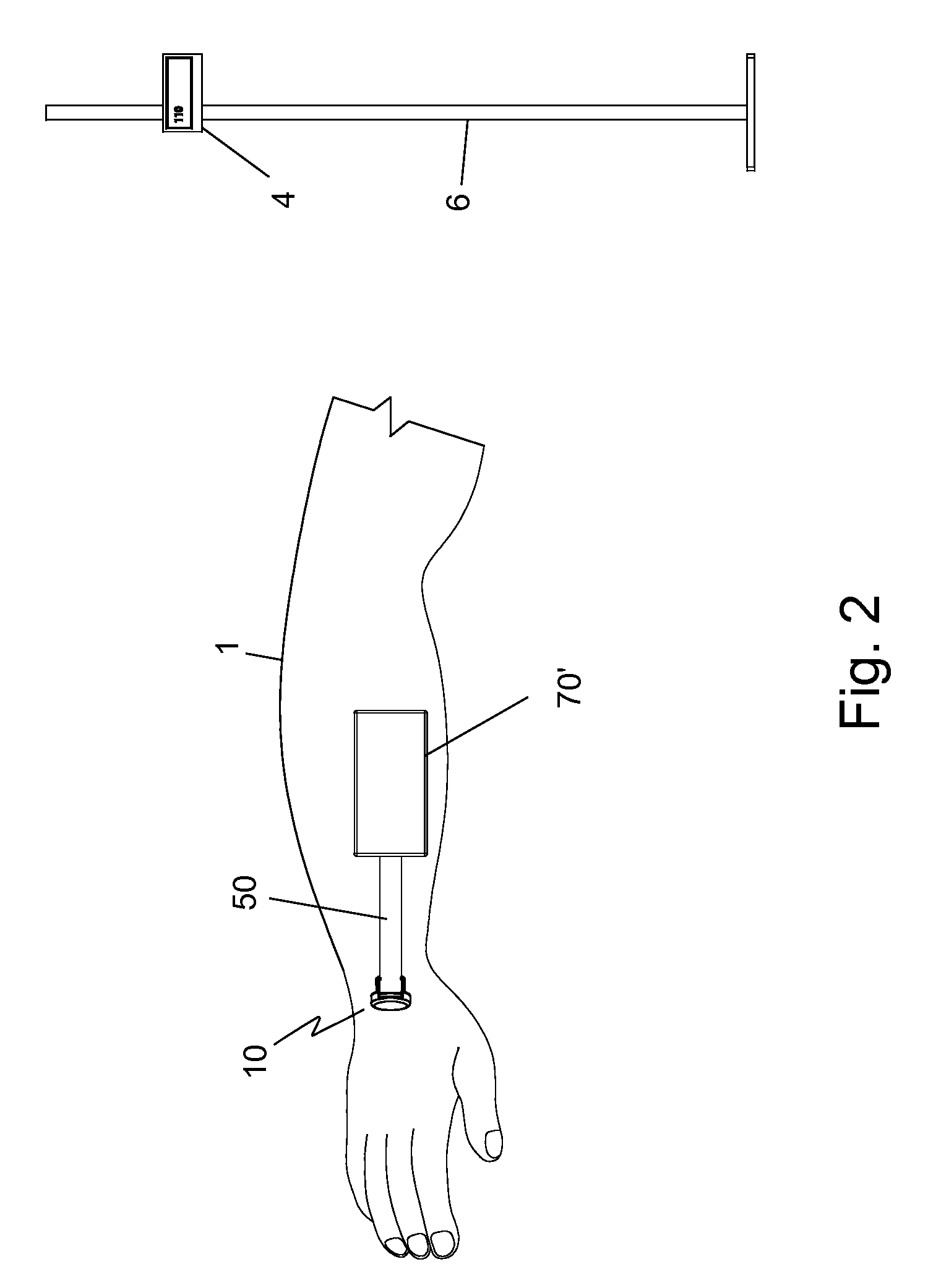Temperature-compensated in-vivo sensor
a sensor and temperature compensation technology, applied in the field of medical devices, can solve the problems of inaccurate analyte measurements, inability to accurately measure body temperature, and risk of contamination by infusion process, and achieve the effect of slowing down certain autonomic responses, accurate analyte measurements, and fluctuation of body temperatur
- Summary
- Abstract
- Description
- Claims
- Application Information
AI Technical Summary
Benefits of technology
Problems solved by technology
Method used
Image
Examples
example 1
[0131]An example of experimental data with and without temperature correction using one embodiment of the present invention is illustrated in FIG. 27. In this in-vitro example, a glucose sensor is exposed to a variety of glucose concentrations while at the same time the temperature of the environment is altered. The glucose concentrations are depicted in FIG. 27 adjacent the measurement traces.
[0132]Temperature is depicted on the right axis and shows an initial temperature of approximately 33° C. until approximately 80 minutes into the test. Thereafter, the temperature is gradually raised to 37° C. After equilibrating at this new temperature point, the temperature is raised to 41° C. where it remains for approximately 60 minutes and then allowed to cool gradually. At the same time the temperature is altered, the sensor is exposed to several glucose concentrations (ranging from 39.2 mg / dl to 323.1 mg / dl), and the response of the glucose sensor is recorded. Glucose concentration is pr...
example 2
[0133]Even small fluctuations in temperature can result in glucose measurement variability and should be corrected if one is to present accurate glucose data to the user. In FIG. 28, there is illustrated data obtained from an in-vitro test when a glucose sensor of the present invention having an integrated temperature sensor is placed in a vial of known glucose concentration and monitored for 5 days. The vial contained an aqueous standard solution having a glucose concentration of 280 mg / dl. Small fluctuations in room temperature are recorded by the temperature sensor and are also reflected in the performance of the glucose sensor. As shown by the data, small temperature fluctuations cause relatively large sensor reading fluctuations, which provides inaccurate concentration readings. By using temperature correction algorithms along with placement of the temperature sensor within 0.25 mm or closer to the enzyme measuring electrode, the temperature sensor data can be used to correct t...
PUM
 Login to View More
Login to View More Abstract
Description
Claims
Application Information
 Login to View More
Login to View More - R&D
- Intellectual Property
- Life Sciences
- Materials
- Tech Scout
- Unparalleled Data Quality
- Higher Quality Content
- 60% Fewer Hallucinations
Browse by: Latest US Patents, China's latest patents, Technical Efficacy Thesaurus, Application Domain, Technology Topic, Popular Technical Reports.
© 2025 PatSnap. All rights reserved.Legal|Privacy policy|Modern Slavery Act Transparency Statement|Sitemap|About US| Contact US: help@patsnap.com



